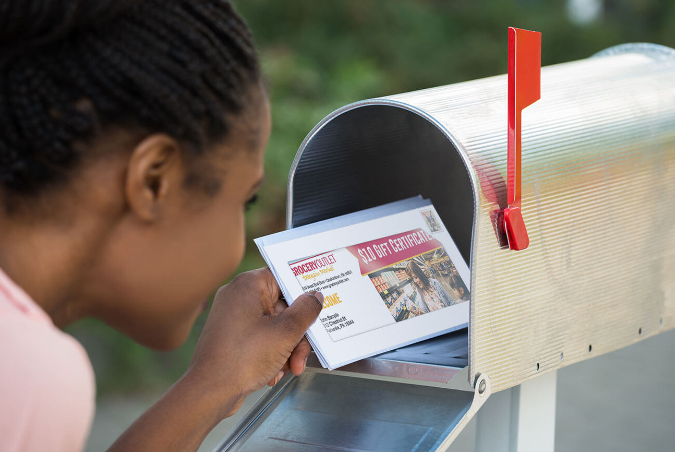Introduction
As a real estate agent, you’re always on the hunt for innovative ways to reach potential clients and generate leads. But in the digital age, it’s easy to overlook the power of traditional marketing tools like postcards. In this blog, we’ll explore how you can leverage postcard marketing to target real estate buyers effectively.
We’ll delve into understanding the real estate market and your target audience, crafting an effective postcard strategy, and designing eye-catching postcards that captivate potential buyers. We’ll also discuss how to write compelling postcard content and implement direct mail marketing campaigns that yield high response rates. Whether you’re a seasoned real estate agent or just starting, this blog will equip you with the knowledge and tools to make your postcard marketing efforts a resounding success.
So, buckle up and get ready to transform your real estate business with the power of postcards!
Understanding the Real Estate Market and Target Audience
In the dynamic world of real estate, understanding your market and target audience is paramount. This knowledge forms the foundation of any successful marketing strategy, including postcard marketing.
As a real estate agent, you need to be well-versed with the local real estate market trends, potential client demographics, and their preferences. This will enable you to tailor your postcard campaigns to resonate with your target audience, increasing your chances of converting potential clients into buyers or sellers.
Conducting Market Research for Targeted Campaigns for Your Real Estate Business
As a real estate agent, understanding your market is crucial to the success of your postcard marketing campaigns. Conducting market research allows you to gain valuable insights into the local real estate market, helping you to identify potential opportunities and challenges.
This research should not only focus on the current state of the market but also on future trends. This will enable you to anticipate changes and adapt your marketing strategies accordingly.
Identifying your target audience is another critical aspect of market research. This involves understanding potential clients’ demographics, preferences, and pain points.
By combining these insights, you can design targeted postcard campaigns that resonate with your audience, increasing the chances of converting potential clients into actual buyers or sellers. Remember, the more you understand your market and target audience, the more effective your postcard marketing campaigns will be.
Identifying Potential Buyer and Seller Demographics
- Age and Family Structure: Young parents aged 20-40 living in rentals may be looking to upsize and settle down in a house. On the other hand, individuals aged 60+ living in two-story homes may be considering downsizing to a ranch-style home for convenience.
- Income and Home Value: These two factors can help determine the affordability of your property for potential clients. People renting in houses are more likely to buy than those living in apartments, possibly due to higher rental costs or a desire for homeownership.
- Credit Score Range: While you can’t target precise scores, you can target a certain range. A prospect’s previous buying behavior can be a great indicator of their financial capability.
- Neighboring Homes: When you list a property, consider sending a “Just Listed” mail piece to the neighborhood. Neighbors may have friends or family who want to move in nearby, or they may see your mailpiece and decide to list with you in the future.
- Length of Residency: The duration of homeownership can often indicate how likely a person is to sell. For instance, if someone has been in the home for just a couple of years, they are unlikely to want to sell. However, the average length of residency varies across the U.S., so it’s important to do your research.
Analyzing Local Real Estate Trends and Opportunities
As a real estate agent, understanding local real estate trends and opportunities is paramount. It’s not just about knowing which properties are selling fast or which neighborhoods are attracting buyers. It’s about understanding the underlying factors driving these trends.
For instance, a sudden surge in demand for properties in a particular neighborhood could be due to a new school or shopping center opening nearby. Similarly, a drop in property prices could be a result of increased crime rates or poor infrastructure.
The real estate market is dynamic and constantly changing. As a real estate agent, staying on top of these changes and adapting your strategy accordingly is key to attracting potential clients and staying ahead of the competition.
Types of Real Estate Postcards for Real Estate Agents
This section will delve into the various types of real estate postcards that agents can use. From ‘Just Listed’ to ‘Just Sold’ postcards, each type serves a unique purpose and targets a specific audience. Whether you’re looking to attract new clients, update existing ones on market trends, or showcase your recent successes, there’s a real estate postcard for every occasion.
Just Listed Postcards
Just Listed Postcards serve a dual purpose, acting as both a beacon for potential buyers and a subtle advertisement of your expertise in the local market. When a new property is listed, these postcards are sent out, featuring high-quality images of the property, a list of its features, and your contact information.
The primary goal of these postcards is to alert potential buyers about a property they might be interested in. However, they also serve a secondary, equally important purpose. They alert the neighbors that you are a real estate agent who is already familiar with their neighborhood. This familiarity can be a significant advantage when they decide to buy or sell a property.
The more Just Listed Postcards the neighbors see, the more likely they are to remember you when they need a real estate agent. It’s a subtle way of establishing yourself as the go-to real estate agent in the neighborhood.
Market Update Postcards
Market Update Postcards are a powerful tool in the arsenal of real estate agents. These postcards provide a snapshot of the local real estate market, including recent sales and changes in property values. They are particularly effective when targeting potential sellers, as they position the agent as a knowledgeable resource in the local market.
The content of these postcards typically includes information such as the average property price in the area, the typical duration houses stay on the market, and general trends like the increase or decrease in property values. This data-driven approach not only educates potential clients but also establishes the agent’s credibility.
One effective strategy is to group these mailers by neighborhood, focusing on similar-sized houses in the same zip code. This allows potential clients to easily compare and digest the information. Including a phrase like “Recent sales could have changed your home value. Find out what your home is worth in today’s market!” can generate interest and lead to new leads.
In the ever-changing landscape of real estate, Market Update Postcards serve as a regular reminder of the agent’s expertise and dedication. They are a testament to the agent’s commitment to staying abreast of market trends and providing valuable information to their clients.
Open House Postcards
Open House Postcards are a powerful tool in the arsenal of real estate agents. These postcards serve as an invitation to potential buyers, enticing them to visit a property and experience it firsthand. The effectiveness of these postcards lies in their ability to provide a sneak peek into the property, piquing the interest of potential buyers.
The key to a successful Open House Postcard is the inclusion of essential details. This includes the property address, the date and time of the open house, and the agent’s contact information. A high-quality image of the property can also be a game-changer, giving potential buyers a glimpse of what they could own.
However, it’s not just about providing information. The postcard should also be designed to attract and engage. Unique details about the property, such as a newly renovated kitchen or an inground pool, can set the property apart and draw in potential buyers.
Just Sold Postcards
Just Sold Postcards are a powerful tool in the arsenal of a real estate agent. They serve as a testament to the agent’s success, showcasing recently closed deals and effectively marketing their prowess in the real estate market. These postcards are typically sent out every time a property is sold, spreading the word about the agent’s accomplishments and building confidence among potential clients.
The content of a Just Sold Postcard is crucial. High-quality images of the sold property, coupled with positive messaging about the agent’s success, can create a compelling narrative. The inclusion of the agent’s contact information also ensures that potential clients know how to reach out for their real estate needs.
The impact of Just Sold Postcards extends beyond the immediate sale. They serve as a reminder to potential clients that the real estate market is active and that the agent is capable of securing successful deals. This can encourage potential sellers to consider entering the market, confident in the knowledge that they have a successful agent to represent them.
Crafting an Effective Postcard Strategy
Crafting an effective postcard strategy is a crucial step in your real estate marketing efforts. It’s not just about sending out postcards; it’s about creating a comprehensive plan that aligns with your business goals and targets the right audience.
A well-thought-out strategy can help you generate leads, differentiate your brand, and ultimately, drive success in your real estate business. Let’s delve into the key components of an effective postcard marketing strategy.
Setting Clear Marketing Goals and Objectives
In real estate marketing, setting clear goals and objectives is the cornerstone of a successful postcard marketing strategy. It’s not just about sending out postcards; it’s about knowing what you want to achieve with each marketing effort.
Perhaps you’re aiming to generate leads for newly listed properties. Or maybe your goal is to nurture relationships with past clients, keeping your brand at the forefront of their minds for future real estate needs.
A well-defined goal is the first step towards measurable success in your real estate business. So, before you launch your postcard marketing campaign, take the time to clearly define what you hope to achieve. This will not only give your campaign direction but also provide a benchmark against which you can measure your success.
Identifying Your Target Audience
In the realm of real estate marketing, understanding your target audience is paramount. It’s not just about casting a wide net; it’s about knowing who you’re trying to catch. Your marketing strategy should be tailored to the specific group you aim to attract, whether they’re first-time homebuyers or seasoned real estate investors.
The key to identifying your target audience lies in the data. Analyze demographic information such as age, income, marital status, and housing preferences. This will help you develop a clear picture of your potential customers and their needs.
Once you’ve identified your target audience, you can craft personalized messages that resonate with them. For instance, a young couple looking to buy their first home will have different needs and concerns than a real estate investor looking for their next big project.
Defining Key Messages and Unique Selling Points
The key messages and unique selling points (USPs) you convey can make or break your marketing efforts. These are the elements that differentiate you from the competition and attract potential clients.
Your USPs could range from a proven track record of quick sales, extensive local knowledge, or a personalized service approach. These should be prominently displayed on your postcards, clearly communicating why you are the superior choice in the real estate business.
The real estate business is all about persuasion. Your copy should focus on the benefits to the customer – why should they choose you? Be sure to prioritize the most important information and eliminate any unnecessary fluff. This way, you can generate leads effectively and efficiently.
Choosing the Right Postcard Size and Design Elements
In the realm of real estate marketing, the size and design of your postcard can significantly influence your marketing efforts. The size of your postcard should be chosen with care, as it directly impacts the cost and response rate. Larger postcards, while more expensive, can be more eye-catching and provide ample space for information, making them a viable option for those looking to generate leads.
The design of your postcard is another crucial factor. It should be engaging, professional, and capable of capturing the recipient’s attention. High-quality images of properties can create a visual impact, conveying the value of your offer and prompting recipients to take action.
However, avoid cluttering your postcard. Maintain white spaces, use legible fonts, and adhere to your brand colors. A clean layout is easy to navigate and more likely to retain the reader’s interest. Important information, such as contact details and calls to action, should be clear and prominent.
Designing Eye-Catching Postcards
Designing eye-catching postcards is an art that combines creativity with strategic marketing. It’s about creating a visual narrative that resonates with your target audience, compelling them to take action. From incorporating stunning visuals to understanding the subtle nuances of color psychology, every design element plays a crucial role in the success of your postcard marketing campaign. Let’s delve into the world of postcard design and explore how you can create postcards that not only capture attention but also drive engagement.
Incorporating Stunning Visuals and Images
In the realm of postcard marketing, the visual component is paramount. The design element of your postcard can make or break the recipient’s interest. High-quality images of properties, for instance, can create a visual impact that effectively communicates the value of your offer.
A well-captured image of a listed property can instantly captivate the audience. It can transport them into the property you’re selling, helping them envision themselves within that space. This is why investing in professional property photography is a non-negotiable aspect of creating compelling postcards.
Postcards are a visual medium. You have mere seconds to catch your recipient’s eye as they open their mailbox. So, make your design count. Use stunning visuals and images to create a postcard that is not just informative, but also visually appealing.
Using Color Psychology to Evoke Emotions
Color psychology plays a pivotal role in postcard marketing. It’s a subtle yet powerful design element that can evoke specific emotions in your audience. For instance, the color green can instill feelings of tranquility and growth, while blue can convey trust and dependability.
Strategically using color psychology in your postcard design can guide your audience’s emotional response. This can be particularly effective in the real estate sector, where evoking the right emotions can significantly influence a potential buyer’s decision.
However, it’s crucial to ensure that your color choices align with your brand’s existing color scheme. Consistency in color usage not only enhances brand recognition but also ensures a cohesive and professional look across all your marketing materials.
Design Tips for a Professional and Appealing Layout
When it comes to postcard marketing, the design element plays a pivotal role in capturing the attention of your target audience. A well-designed postcard can make a lasting impression, prompting potential buyers to take the next step.
The first step in creating an appealing layout is to choose the right postcard size. The size should be large enough to accommodate high-quality images and text, but not so large that it becomes cumbersome for the recipient.
Next, consider the use of white space. A cluttered postcard can be off-putting, making it difficult for the recipient to focus on the key message. By maintaining white spaces, you can ensure that your postcard has a clean, professional look.
Writing Compelling Postcard Content
Creating compelling content for your real estate postcards is an art that requires a blend of creativity, strategy, and understanding of your target audience. It’s not just about writing; it’s about crafting a message that resonates with potential buyers, compelling them to take action. This section will delve into the essentials of writing captivating postcard content, from attention-grabbing headlines to persuasive copy and strong calls-to-action.
Remember, the goal is to increase your response rate and make your real estate direct mail campaign a success. So, let’s dive in and explore how to create content that not only informs but also inspires action.
Crafting Attention-Grabbing Headlines and Taglines
Crafting attention-grabbing headlines and taglines is a crucial step in real estate direct mail marketing. The headline is the first thing your audience will read, and it needs to be powerful and concise. It should speak directly to the recipient’s needs and convey the value proposition you’re offering. For instance, “Dream Homes Await,” “Just Listed: Your Future Home,” or “The Perfect Investment Property” are examples of compelling headlines that can increase your response rate.
Your headline and tagline are not just words; they are your first opportunity to engage your audience. They should be crafted with care and precision to ensure they resonate with your target market.
Writing Persuasive and Concise Copy
In the realm of real estate direct mail, the power of persuasive and concise copy cannot be overstated. It’s the bridge that connects your audience to the property or service you’re offering. The key is to focus on the benefits to the customer, answering the question, “Why should they choose you?”
Your copy should be compelling, yet succinct. Remember, real estate postcards offer limited space, so every word must count. Prioritize the most important information and eliminate any unnecessary fluff. This approach not only increases the response rate but also ensures your message is clear and direct.
The art of persuasion in real estate copywriting lies in understanding your audience’s needs and addressing them directly. Whether you’re selling a dream home or your services as an agent, your copy should speak to the recipient’s desires and aspirations.
Including a Strong Call-To-Action To Drive Responses
A strong call-to-action (CTA) is the linchpin of any successful real estate direct mail campaign. It’s the final nudge that propels the recipient from passive reader to active participant. The CTA should be clear, compelling, and direct, instructing the recipient on exactly what to do next. This could be a prompt to call for a free consultation, visit open houses, or check out a new listing on your website.
The beauty of a well-crafted CTA lies in its simplicity. It doesn’t have to be complicated or convoluted. Instead, it should encourage the reader to take action, whether it’s to discuss home prices, put the football game schedule on the fridge, or remember you’d appreciate their referrals. The key is to avoid overthinking it.
The design of your postcard is crucial in capturing the recipient’s attention. But it’s the CTA that ultimately drives them to act. So, make sure your CTA is easy to spot and understand, using action-oriented language that motivates the recipient to take the next step.
Implementing Direct Mail Campaigns
In the world of real estate, implementing direct mail campaigns can be a game-changer. It’s a strategic move that can help you target potential buyers more effectively, especially when you leverage the power of postcard marketing.
This section will delve into the nitty-gritty of executing a successful postcard campaign. From the importance of scheduling and timing your mailings to the role of A/B testing in optimizing your campaign, we’ll cover it all. We’ll also explore how integrating postcards with other marketing channels can amplify your reach in the digital age. So, let’s dive in and learn how to make the most of your mailing list and customer database.
Scheduling and Timing Postcard Mailings
In the realm of real estate marketing, the timing of your postcard campaign can significantly influence its success. It’s not just about sending out mailers; it’s about sending them out at the right time. This requires a deep understanding of market trends, seasonal variations, and the specific needs and behaviors of your target audience.
A well-timed postcard can serve as a gentle reminder of your real estate services during prime real estate seasons, major holidays, or local events. For instance, a postcard sent during the back-to-school week or Independence Day can create a connection with potential clients who are looking to buy or sell properties.
However, timing isn’t just about the season or event. It’s also about the delivery. A daylight savings reminder postcard, for example, won’t be effective if it arrives too early or too late. The key is to make your message positive, concise, and timely.
A/B Testing for Optimization
In the digital age, A/B testing has become a crucial tool for optimizing your postcard campaign. This method involves creating two versions of a postcard and sending them to different segments of your mailing list. The goal is to identify which version resonates more with your audience, thereby increasing the effectiveness of your campaign.
The key to successful A/B testing is to change only one element at a time. This way, you can accurately attribute any differences in performance to the specific change you made.
Integrating Postcards With Other Marketing Channels
In the digital age, the integration of postcards with other marketing channels is not just an option, but a necessity. This multi-channel approach can significantly enhance the effectiveness of your postcard campaign, providing a consistent brand experience and maximizing exposure.
For instance, incorporating a QR code on your postcards can direct recipients to a specific page on your website or social media profiles. This not only increases engagement but also drives traffic to your online platforms, thereby generating high-quality leads.
While postcards may not offer the same level of data analytics as digital marketing, they can still be tracked for effectiveness. Unique phone numbers or website URLs can be used on your postcards to measure response rates and gauge their impact on your business.
Measuring Success and Tracking ROI
In the world of real estate, postcard marketing can be a powerful tool to reach potential buyers. However, the key to a successful campaign lies in the ability to measure its success and track the return on investment (ROI). This section will delve into the importance of setting up tracking mechanisms, analyzing response rates and conversion metrics, and evaluating the overall ROI. By understanding these aspects, you can effectively use postcards as a marketing tool to grow your business.
Setting up Tracking Mechanisms for Postcard Campaigns
In the realm of postcard marketing, setting up tracking mechanisms is a crucial step to gauge the effectiveness of your campaign. It’s not just about sending out postcards to potential buyers, but also about understanding how these marketing tools are helping to grow your business.
One effective way to track your campaign is by using unique URLs or QR codes on your postcards. This allows you to monitor the response rate, which is the number of people who respond to your postcard by visiting the unique URL or scanning the QR code.
The goal is not just to use postcards as a marketing tool, but to use them effectively. By setting up tracking mechanisms, you can ensure that your postcard marketing is not just a shot in the dark, but a calculated strategy to reach potential buyers.
Analyzing Response Rates and Conversion Metrics
Analyzing response rates and conversion metrics is a crucial step in evaluating the effectiveness of your postcard marketing campaign. These metrics provide insights into how well your postcards are resonating with potential buyers and motivating them to take action.
Response rates can be a telling indicator of the effectiveness of your messaging. A high response rate suggests that your postcards are engaging and compelling to your target audience. On the other hand, a low response rate may indicate that your messaging needs to be refined or that your postcards are not reaching the right audience.
Conversion metrics, on the other hand, measure the extent to which your postcards are driving potential buyers to take the desired action, such as visiting your website or making a purchase. A high conversion rate signifies that your postcards are not only engaging but also persuasive, prompting potential buyers to take the next step in the buying process.
Evaluating the Overall Return on Investment
Evaluating the overall return on investment (ROI) is a crucial step in determining the effectiveness of your postcard marketing campaign. It’s not just about the number of postcards sent out or the response rate, but the tangible results that translate into business growth.
The first step in this process is to calculate the total cost of your campaign. This includes the design, printing, and postage costs. Once you have this figure, you can then subtract it from the total revenue generated from the campaign. The resulting figure is your ROI.
A successful marketing campaign is not just about high response rates, but also about the quality of those responses. It’s about turning potential buyers into actual buyers. Therefore, while evaluating your ROI, consider the quality of leads generated and the conversion rates. This will give you a more comprehensive understanding of your campaign’s success.
The Power of Real Estate Postcards in Marketing
In conclusion, the power of targeted real estate postcards in marketing cannot be overstated. They offer a unique blend of tradition and effectiveness, providing real estate agents with a potent tool to enhance their visibility, build brand trust, and achieve better market penetration. Whether you’re a seasoned real estate agent or a newcomer to the industry, leveraging the potential of postcard marketing can significantly boost your lead generation and conversion rates.
Moreover, the versatility of postcards allows for a wide range of content, from introducing yourself as a friendly and reliable agent to sharing market updates and showcasing your successful property listings. This keeps your marketing efforts fresh, engaging, and relevant to your target audience.
Remember, in the fast-paced and competitive real estate market, standing out is key. With a well-planned and executed postcard marketing strategy, you can ensure your postcards not only catch the eye but also resonate with potential clients, driving them to take action.
To maximize your postcard marketing efforts, consider partnering with Cactus Mailing, a leader in direct mail marketing. With their expertise, you can create impactful postcard campaigns that deliver results, helping you reach your goals faster and more efficiently.




















